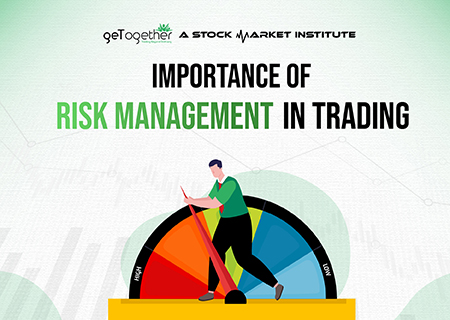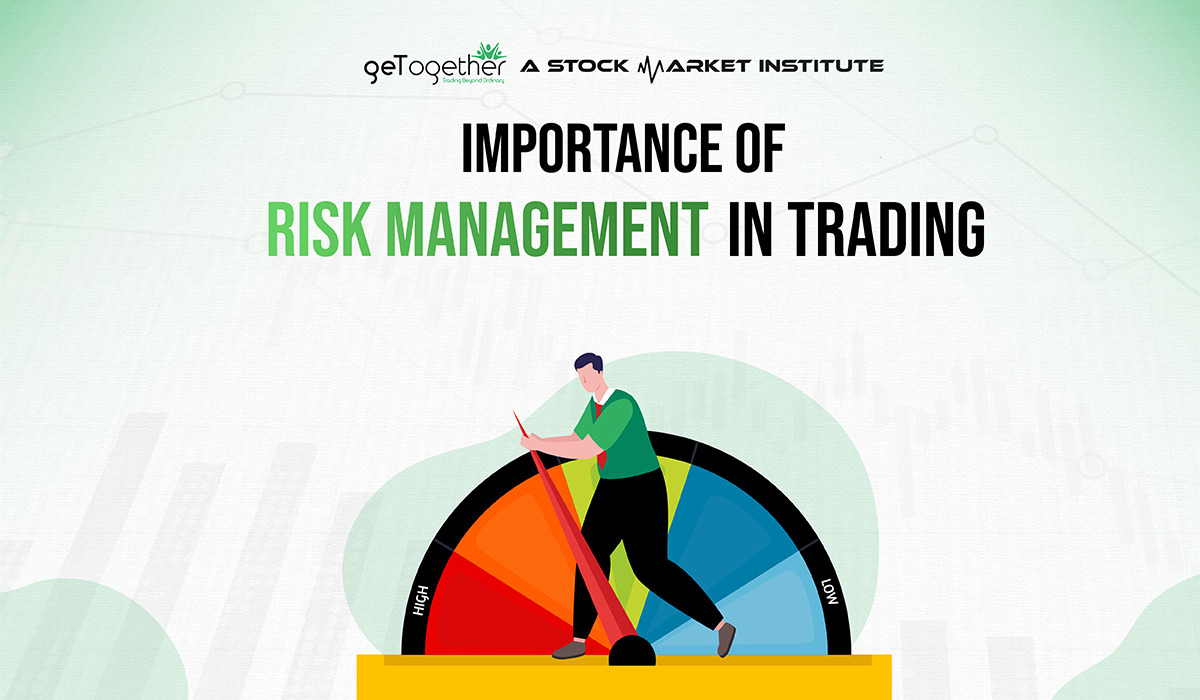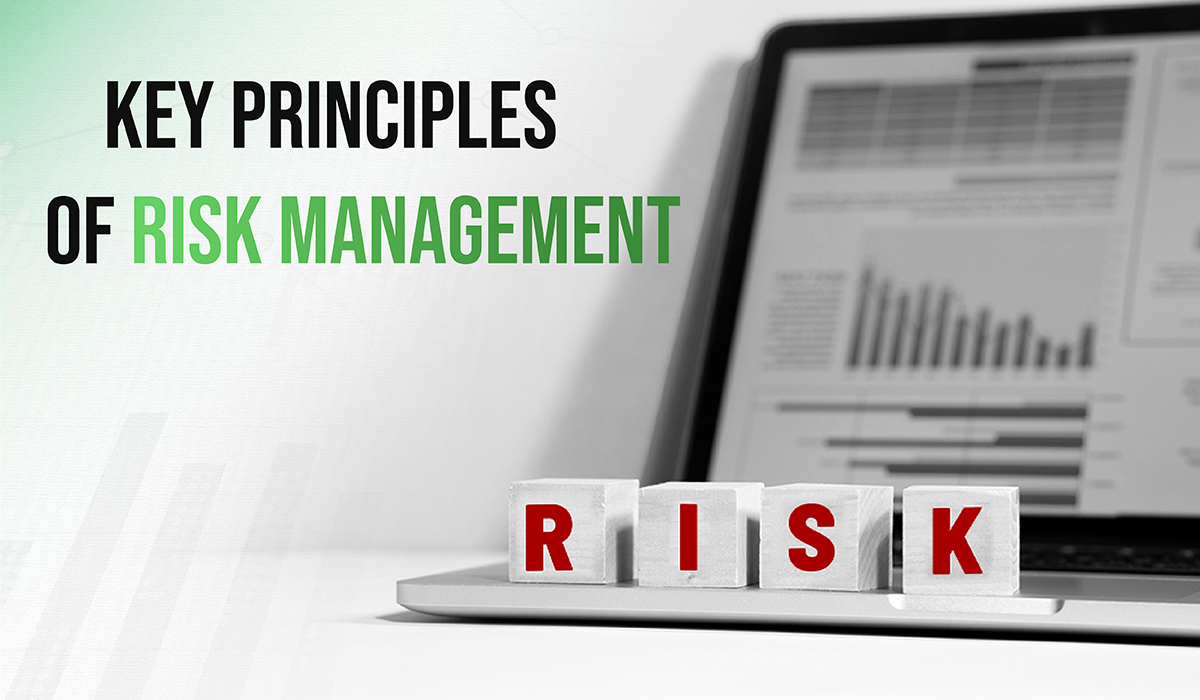IMPORTANCE OF RISK MANAGEMENT IN TRADING


Every trader enters the market to earn rewards but if you don’t know how to deal with risks in the market you can not ever earn desired rewards. With the trading practice, it is equally important to make sure that your trades are secure with the right risk management strategies. Having a good knowledge of management of risk strategies and the right identification and evaluation of your risks is just like a boon to any trader as it helps them to minimize overall losses. Risk includes decisions and situations that can harm trading positions, such as market volatility, price fluctuations, liquidity issues, and unexpected financial events.
This article dives into the significance of risk management in trading, highlighting its primary advantages, and providing traders seeking to confidently navigate volatile markets with valuable insights
Table of Contents
ToggleWhat is risk management?
It is one of the crucial aspects of trading that every trader should implement in their trading, as it helps to identify, control, and assess the potential risk of a trade or investment. Stock market acting volatile is no new thing for traders but by effective strategies, they can make informed decisions and protect their capital from inherent market risks. These strategies include a variety of approaches that traders can take depending on their trading style and financial objectives.
Advantages of Risk Management
Decreasing the amount of capital
One of the Most Important Benefits of managing risks in trading is that they can reduce the amount of capital they expose to each trade by implementing good strategies. Because of this, even if a trade fails, the overall impact on their trading capital can be controlled. Long-term success necessitates capital protection, which enables them to maintain their position even during volatile market conditions.
Promoting Consistency
Consistency is one of the most important characteristics of successful traders. By requiring a disciplined approach to trading, it promotes consistency. Through the predictable use of risk management techniques, they can try to not make rash and panic decisions while trading and keep a consistent approach towards their financial objectives.
Limiting your losses
Every trader wants to limit the loss on their investments. Managing risk in trading specifically contributes to reducing losses. It can also assist in safeguarding traders’ accounts against total loss. They have the potential to earn profits from the market if they can effectively manage the risk.
Key Principles of Risk Management

There are various key principles of risk management in trading that they should consider to effectively manage risk and increase the chances of success in the market, some are described below:-
Setting clear risk and reward goals
The most important thing to understand by traders is to have a clear understanding of the potential risks and rewards of a trade before entering it. As it helps you to ensure risk to reward ratio and determine whether it is favorable to align with the trader’s overall risk appetite or not.
Diversifying a Portfolio
Diversification is a well-known approach to managing risks that spreads investments across a variety of assets or industries. They reduce the concentration risk associated with holding a single position or asset by diversifying their portfolios. Since gains in one area can make up for losses in another, this strategy protects an investment from negative events that could affect that investment.
Also Read: Save Tax and Cover Risks
Using Stop Loss Orders
Stop-loss orders are a popular tool that let traders set a maximum loss that they are willing to accept for a trade. By putting a foreordained stop misfortune level, brokers can consequently leave a position on the off chance that the market moves against them past a specific limit. Stop-loss orders protect traders from significant market crashes and help limit potential losses.
Monitoring and Adjustment
Managing risk in trading is an ongoing process that necessitates constant risk level monitoring and adjustment. Based on market conditions, volatility, and other relevant factors, they should regularly evaluate their risk levels and make any necessary adjustments.
Position Sizing
Position sizing implies deciding the suitable size of each trade in light of risk management and position size. With the help of position sizing, they can manage their exposure and avoid excessive losses that could harm their overall trading performance by carefully allotting capital to each trade.
Psychological Aspect of Risk Management in Trading
Although it focuses primarily on financial aspects, it also includes trading’s psychological aspect. First, staying Disciplined, discipline is essential for effective management. Respecting stop-loss, Consistency, and long-term success are assured by adhering to a disciplined approach only. They must control their emotions and maintain a disciplined mindset to manage risk effectively. Another aspect is to manage Greed and Fear. Trader’s decisions are frequently influenced by greed and fear. Greed can cause them to take on too many risks, while fear can result in missed opportunities or premature exits. They can maintain a balanced approach to trading and make objective decisions based on analysis by understanding and controlling these emotions.
Conclusion
In the field of trading, risk management isn’t only a choice for long-term success, proper knowledge of technical analysis, demand, and supply is equally important with it. By implementing effective strategies, they can protect their capital, preserve emotional well-being, enhance decision-making, and promote consistency in their trading journey. Traders can not take advantage of trading until and unless they don’t know how to manage risks, so every trader whether novice or professional should add managing trader with allowed risk into their trading style.
FAQs
Why is risk management in trading significant?
Long-term trading success can only be achieved by effective management, which helps them safeguard their capital, make well-informed decisions, and maintain emotional well-being.
In risk management, what role does diversification play?
Diversification helps them to spread risk across various sectors or businesses, which diminishes the effect of risks on the general portfolio.
How can stop-loss orders assist in set risks?
Stop loss orders let them set a maximum loss they are willing to take on trade according to their risk appetite. If the market moves against them beyond a certain point, the order will automatically close the position.
How does risk management address the mental part of trading?
To make decisions that are more objectively based on analysis rather than emotions, managing risk refers to mastering one’s emotions, maintaining discipline, and controlling one’s fear and greed.
CATEGORIES



 Facebook
Facebook Instagram
Instagram Youtube
Youtube
